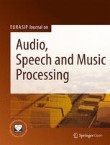Singer identification using perceptual features and cepstral coefficients of an audio signal from Indian video songs
Singer identification is a difficult topic in music information retrieval because background instrumental music is included with singing voice which reduces performance of a system. One of the main disadvantag...
